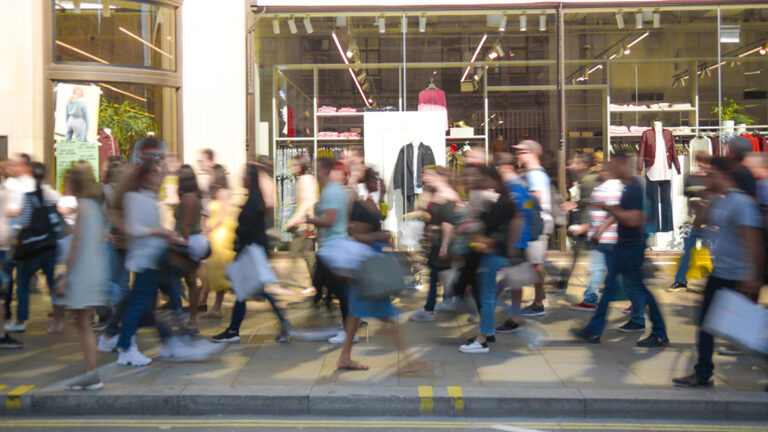Springboard says that despite it usually being a peak trading week for retailers pre-Christmas, due to the rail strikes and cold weather, footfall across UK retail destinations last week was -0.9% lower than last year and -20.1% below the 2019 footfall level. This was driven by -4.6% drop in footfall from the week before.
By far the largest impact was felt by high streets where a drop in footfall of -10.2% from the week before meant a decline of -1.8% from last year and a gap of -22.6% from the 2019 level. In retail parks and shopping centres footfall rose last week from the week before (by +1.6% and +0.8% respectively), however, due to the strong performance of retail parks during Covid, last week footfall was -1.8% lower in retail parks than in 2021 and -9.8% lower than in 2019. In shopping centres, footfall was +1.8% higher than last year, but like high streets footfall was significantly below the 2019 level (-24.8%).
When the rail strike occurred on Tuesday and Wednesday footfall in high streets dropped by an average of
-15.7% from the week before versus a rise of +1.3% in retail parks and a drop of -2.7% in shopping centres. There was as nearly as great a contrast over the three days from Thursday to Saturday, with an average drop in footfall from the week before of -6.8% in high streets versus rises of +4.2% in retail parks and +3.2% in shopping centres.
Across the range of town types, there was as significant a variance; on Tuesday and Wednesday footfall in Central London was -31% lower than the week before, -20.7% across large cities outside the capital and -18.7% in historic towns. However, in market towns footfall was -7.6% lower on Tuesday and Wednesday and +2.2% higher than the week before between Thursday and Saturday.
Diane Wehrle, insights director at Springboard, commented: “Last week – the week prior to Christmas – should have been a peak trading week for retail destinations and stores, with footfall expected to rise from the week before as Christmas shopping moves towards its zenith. Instead, footfall across UK retail destinations took a tumble. While the cold weather prevailed, which would undoubtedly have had some impact, the contrast with the results for the week before clearly demonstrate that it was the rail strikes that were the key impact on footfall.
“By far the hardest hit of the three key destination types were high streets, which lost both shoppers who couldn’t reach towns and cities by rail, but also employees who chose to work at home last week. Some of this footfall migrated to retail parks and shopping centres, with both recording rises from the week before (albeit modest) versus a significant drop in footfall in high streets. Retail parks fared the best of all three destination types, supported by the fact they can be easily accessed by car with the bonus of free car parking.
“Across the range of towns and cities Central London, with its proportionately greater reliance on public transport and a significant working population, was by far the hardest hit. It was followed by historic towns, where narrow roads would have resulted in significant congestion deterring some visitors who weren’t able to arrive by rail. It was evident that many shoppers stayed local last week, with only a modest drop in footfall in market towns.”


